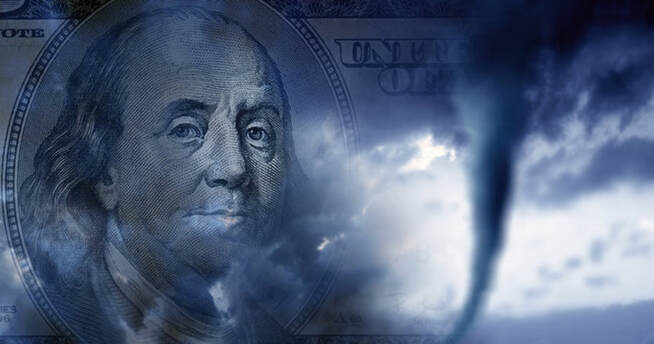|
From a financial perspective, inflation, interest rates, and a possible recession remain the most vital topics in the short term. While inflation came down substantially in 2023, interest rate hikes have persisted thus far. In the US, the interest rate set by the Fed remains at 5% after they decided that no hike was necessary in June 2023. With the release of job data in early July, talks about further hikes have increased, as data showed that job growth has slowed. Market participants now expect further hikes in 2023. The projection from the beginning of 2023 and possible rate cuts as early as Q3 2023 seem very unlikely at this point. Figure 1 shows the expected interest rate level until 2025. Rates are expected to rise to 5.5% by the end of 2023. Based on a survey from 18 members of the FOMC, rate projections range from 5.1%-6.1% by the end of the year. In 2024 and onwards, gradual rate cuts are expected with rates around 3% by 2025. These projections are highly dependent on a positive development of inflation and job data. Recent inflation data in the US has been very promising, as inflation decreased to “only” 4%. The steep measures taken by the Fed since 2022 managed to combat inflation substantially. Excluding highly impactful developments (e.g., a steep recession or a strong escalation of war), inflation is expected to steadily decrease over the next years. By the end of 2023, inflation is expected to be around 3% ± 1% and slightly above 2% ± 2% in 2024. The expected, slowed decrease in inflation is largely attributed to the tamer measures of the Fed after their initial aggressive hikes. As these take time to become effective, the decrease should slow down. Additionally, a recession or a market correction is highly likely which may cause further issues with inflation and may slow down the effectiveness of the measure so far. Overall, the likelihood of a recession is still significantly high. The most notable differences in the expected recession compared to forecasts in early 2023 and 2022 are the recession is likely a mild one. Additionally, with the recent positive developments, a possible recession is pushed further in the future. At the end of 2022, a recession was anticipated to occur between Q3 and Q4 2023. Current forecasts expect a recession in the US in early 2024. Despite the harsh ecosystem, US equities had a great year in 2023 with a 15% return so far. On an industry level, the picture looks very different. Basically the entire gain of equities came from soaring tech stocks. On the other end of the spectrum are banking stocks, which have suffered this year, especially after the collapse of multiple large banks, such as Silicon Valley Bank and Credit Suisse. Forecasts for the value of the S&P 500 at the end of 2023 deviate substantially. In general, estimates were raised slightly compared to estimates back in 2022. On an aggregate level, investment banks expect the S&P 500 to end the year at roughly above 4,100. The highest estimates are 4,550 for the index. Contributors to these estimates are a less aggressive Fed, resilient economic growth, and the recent interest in artificial intelligence in combination with the soaring tech stocks. Bearish outlooks go as low as 3,400 points and cite a continued slide in stocks as the core reason.
*|MC_PREVIEW_TEXT|*
Comments are closed.
|
|
|
Stone Mountain Capital LTD is authorised and regulated with FRN: 929802 by the Financial Conduct Authority (‘FCA’) in the United Kingdom. The website content is neither an offer to sell nor a solicitation of an offer to buy an interest in any investment or advisory service by Stone Mountain Capital LTD and should be read with the DISCLAIMER. © 2024 Stone Mountain Capital LTD. All rights reserved. |


















 RSS Feed
RSS Feed
